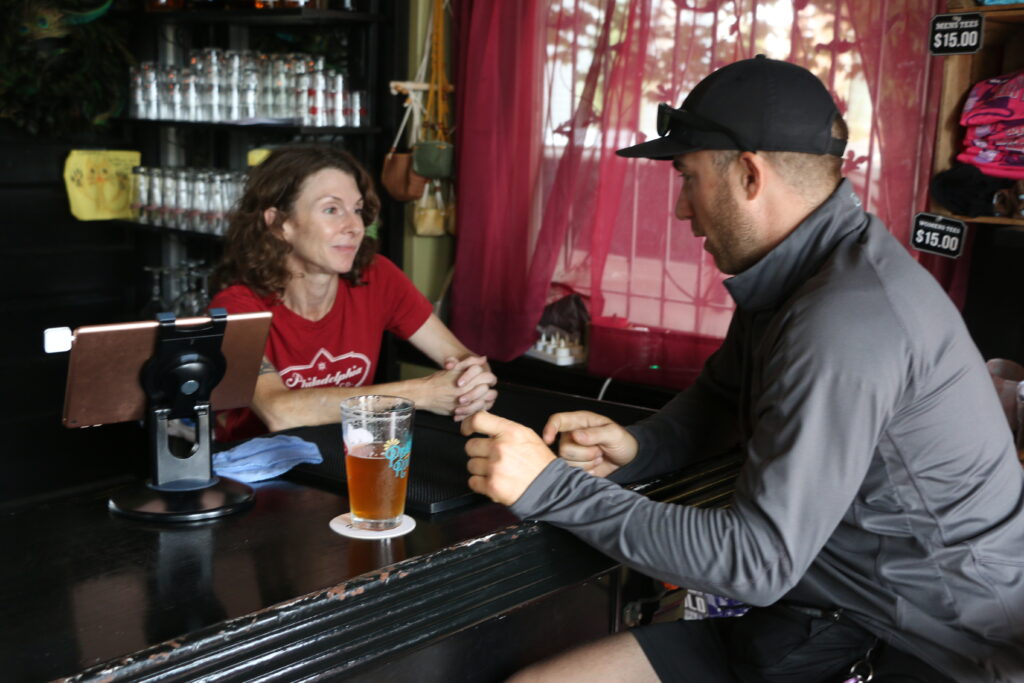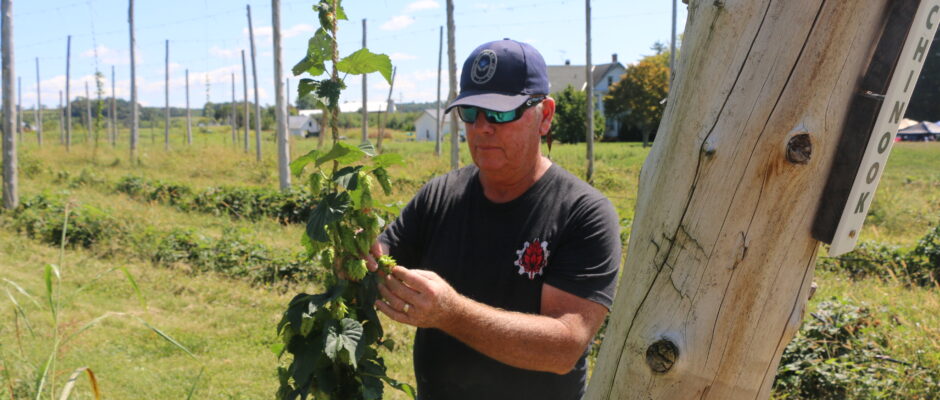The craft brewing industry has exploded in recent years. So has the demand for hops, a key ingredient in beer. From 2012 through 2017, the number of farms in Pennsylvania growing hops increased from two to 17, and some local brewers have even decided to cut out the middle man by growing their own.
Overall, the Commonwealth produces nearly 11,600 pounds of hops annually, according to the National Agricultural Statistics Service (NASS). Those numbers pale in comparison to the amount of hops grown in the Pacific Northwest, but the industry presents a remarkable opportunity for farmers and the state’s $5.8-billion craft brew industry.
According to statistics from the national Brewers Association, Pennsylvania ranks number one in the nation by the number of barrels of beer produced annually at 3.7 million. From Pittsburgh to Philadelphia, brewmasters are gaining a competitive edge and control over how their beer tastes based on the hops they use. By stringing up Humulus lupulus plants wherever they have vertical space, brewers can harvest hops off a relatively small plot of land.

Milton Knouse II, owner of Thirsty Farmer Brew Works in Biglerville, is both a farmer and a brewer. He decided to start a hop yard at his brewery for aesthetic and financial reasons.
“The cost of grain is high, the cost of yeast is high and the cost of hops is high,” he explains. “When I learned that I could grow them cheaper than I could buy them — I also knew that I had the space — I figured it would be pretty neat to have hops growing right by the brewery.”
In 2015, Knouse planted seven varieties of hops on an acre in the backyard of his brewery, which is centrally located in 600-plus acres of apples and other fruit grown on the family farm, located about seven miles from downtown Gettysburg in Adams County.
When I learned that I could grow them cheaper than I could buy them — I also knew that I had the space — I figured it would be pretty neat to have hops growing right by the brewery.Milton Knouse II, Thirsty Farmer Brew Works
“Fortunately, hops are harvested here in August, which doesn’t interfere with the apple season,” he says. “You really have to do your research though to make sure you have the right hops for your soil.”
Knouse noted that to maximize hop production you must have an adequate light source, no frost for at least 120 days, adequate moisture, and a soil pH of 6.0 to 7.0.
“We have pretty good moisture and excellent soil fertility,” he explains. “It usually takes four years to get a full production of hops, but we did really well starting in our second year. At full production, one plant will produce about one to two pounds of hops.”
Knouse’s hops operation includes a drying machinery, a drying area, and a cold storage facility (hops are placed in refrigerated units once they’ve been pelletized).

“We made the decision to include these facilities so that we can sell hops to other brewers who want to buy our product,” says Knouse.
In addition to growing hops, he also uses apples from his orchard to make Apple Graff, a unique cider-beer combo.
“It is a beer blend made with fresh apple cider and fermented along with light beer wort,” he explains. “It is an aromatic apple-flavored brew that combines our passion for fruit growing.”
While it may appear to be a win-win, growing hops is hard work. Matt Gouwens is the owner of Hop Farm Brewing Company in Lawrenceville, a suburb of Pittsburgh.
At first I thought it was about the economics of vertically integrating your supply, but it is really about sticking with the local grower and supporting the local business community.Matt Gouwens, Hope Farm Brewing Company
“Labor is intensive in the spring as you have to manage the amount of sprouts, and then train them on the string…to maximize their exposure to sunlight,” he says. “Then once they go, you have to water and monitor insects and other pests. Harvest time is also extremely labor intensive — and one of the most costly inputs.”
Gouwens decided to grow 120 plants on one-third of an acre in the backyard of his home without really knowing how much work was involved.
“I really had no clue in the beginning,” he recalls. “I had the interest and the passion for growing things but it was total ignorance on the labor side. You have to wear brush pants and shirts since these suckers will slice right through normal clothing. Plato named hops ‘Little Wolf’ because of how ferocious the plant is when it comes in contact with the human body.”

Despite tall that hard work, the volume of hops he grows is relatively small, so he has right of first refusal for hops harvested at nearby Hazy Daze Lavender & Hops Farm in Prospect, PA. They’re currently growing about six acres of hops.
“At first I thought it was about the economics of vertically integrating your supply, but it is really about sticking with the local grower and supporting the local business community,” says Gouwens. “We all know that purchasing local produce isn’t always the cheapest option, but it is about the local community — us supporting him and him supporting us.”
Most brewers can’t produce the volume of hops needed to make all their beers, but these special buds provide an opportunity to produce specialty brews such as fresh (or wet-hopped) beers.
At Philadelphia Brewing Company (PBC), they brew one particular ale the same day the hops are harvested. Another aspect of the production method is also unorthodox: Co-op members who live in the brewery’s Fishtown neighborhood of Philadelphia actually grow small batches of hops for Harvest from the Hood, a fresh-hopped beer released annually.

“There is a communal spirit throughout the neighborhood as our growers talk to their friends and say, ‘Yeah, I had a part in that. I grew hops and gave it to them,'” says PBC co-owner Nancy Barton. “And we give them a case of beer for giving us their hops. I think it is a good thing because it makes our community feel connected.”
In addition, the brewery has about 11 hop varieties planted in their courtyard. Between those hops and the haul from the neighborhood, there is enough for their seasonal beer, which is launched with a bang.
“We blast out on social media to tell everyone that it’s ready and to come get it because there is a limited supply,” says Barton. “It’s one and done, and when it’s gone, that’s it for that year.”
When the hops are harvested for a fresh-hopped beer, the oil is extracted that same day and made into what Barton calls a “hop tea.” After fermentation — which lasts from 7 to 10 days — the beer is then kegged or bottled for sale.
No matter what style of beer you like to quaff, it’s good to know that your adult beverage of choice is PA Proud. After all, more homegrown hops means more interesting beers to sample and enjoy from one of Pennsylvania’s many quality brewers.
JAMES MENTZER is president of Mentzer Communications and a freelance writer whose first book, Pennsylvania Manufacturing: Alive and Well, was published last year. He resides in Harrisburg.
LEAD IMAGE: Milton Knouse II of Thirsty Farmer Brew Works grows seven varieties of hops on his farm in Adams County.



